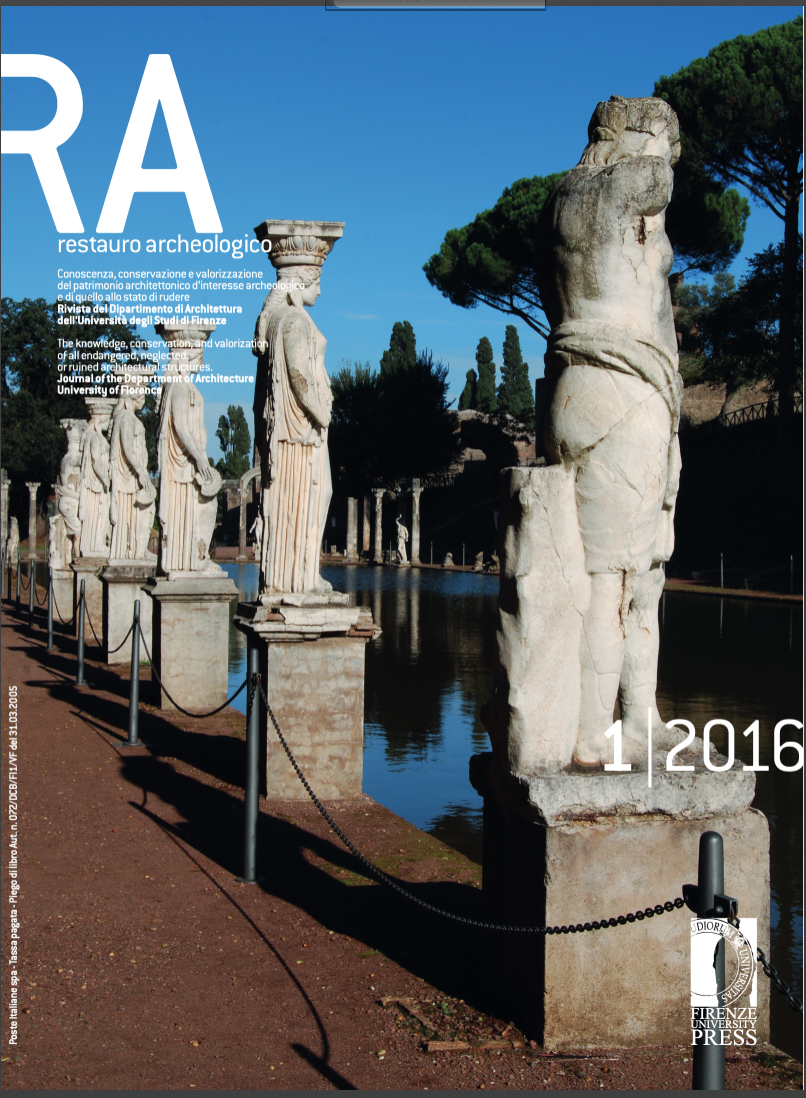Published 2016-11-21
Keywords
- Fiorentino,
- Capitanata,
- Swabian architecture,
- masonry
How to Cite
Abstract
The archaeological site of Fiorentino is located on a hill on the edge of the Tavoliere plain. Inhabited since ancient times, reactivated in the 11th century by the Byzantine government, the settlement reached its greatest expansion in the Norman and Swabian age. It was the site of one of the Domus Solaciorum of Frederick II of Swabia who died there in 1250. The Italian-French archaeological campaigns (1982-1994) uncovered dwellings, cisterns, churches, the cathedral, the main castle fortified area, moats, walls. The investigations were accompanied by widespread conservation interventions, often incomplete and inadequate though. Today the site is abandoned and the rare valorization activities undertaken fail to strengthen the contact with the local people. A research carried out by the University of Florence (DIDA) monitored for years the conservation conditions of many structures. The most critical aspects concern the poor quality walls, especially if unprotected, that are in continuous degeneration. The architectural structures on the hillside are increasingly at risk of instability. Constant care and maintenance would be needed, that can fit into broader programs of enhancement of the complex. Punctual and occasional interventions in the long run are ineffective and wasteful.


